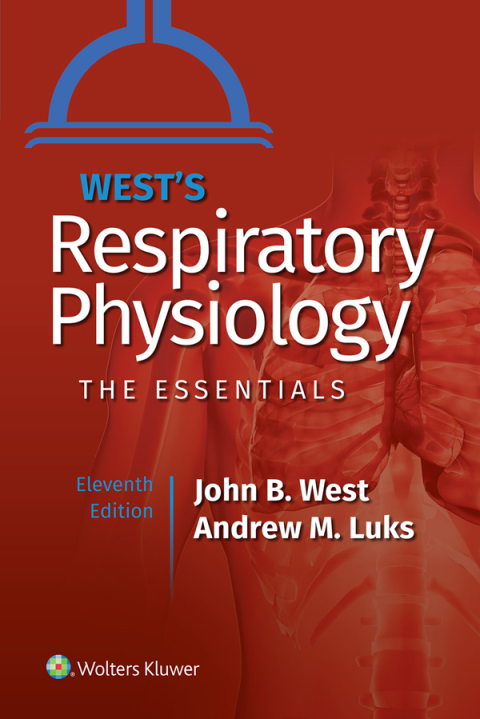Description
Efnisyfirlit
- Cover
- Title Page
- Copyright
- Dedication
- Preface
- Animations
- Contents
- Chapter 1 Structure and Function—How the Architecture of the Lung Subserves Its Function
- Blood-Gas Interface
- Airways and Airflow
- Blood Vessels and Flow
- Stability of Alveoli
- Removal of Inhaled Particles
- Removal of Material from the Blood
- Chapter 1: Multiple Choice Questions
- Chapter 2 Ventilation—How Gas Gets to the Alveoli
- Lung Volumes
- Ventilation
- Anatomic Dead Space
- Physiologic Dead Space
- Regional Differences in Ventilation
- Chapter 2: Multiple Choice Questions
- Chapter 3 Diffusion—How Gas Gets Across the Blood-Gas Barrier
- Laws of Diffusion
- Diffusion and Perfusion Limitations
- Oxygen Uptake Along the Pulmonary Capillary
- Measurement of Diffusing Capacity
- Reaction Rates with Hemoglobin
- Interpretation of Diffusing Capacity for CO
- CO2 Transfer Across the Pulmonary Capillary
- Chapter 3: Multiple Choice Questions
- Chapter 4 Blood Flow and Metabolism—How the Pulmonary Circulation Removes Gas from the Lung and Alters Some Metabolites
- Pressures Within Pulmonary Blood Vessels
- Pressures Around Pulmonary Blood Vessels
- Pulmonary Vascular Resistance
- Measurement of Pulmonary Blood Flow
- Distribution of Blood Flow
- Active Control of the Circulation
- Water Balance in the Lung
- Other Functions of the Pulmonary Circulation
- Metabolic Functions of the Lung
- Chapter 4: Multiple Choice Questions
- Chapter 5 Ventilation-Perfusion Relationships—How Matching of Gas and Blood Determines Gas Exchange
- Oxygen Transport from Air to Tissues
- Hypoventilation
- Diffusion Limitation
- Shunt
- The Ventilation-Perfusion Ratio
- Effect of Altering the Ventilation-Perfusion Ratio of a Lung Unit
- Regional Gas Exchange in the Lung
- Effect of Ventilation-Perfusion Inequality on Overall Gas Exchange
- Distributions of Ventilation-Perfusion Ratios
- Ventilation-Perfusion Inequality as a Cause of CO2 Retention
- Measurement of Ventilation-Perfusion Inequality
- Chapter 5: Multiple Choice Questions
- Chapter 6 Gas Transport by the Blood—How Gases Are Moved to and from the Peripheral Tissues
- Oxygen
- Dissolved O2
- Combination with Hemoglobin
- O2 Dissociation Curve
- Carbon Dioxide
- CO2 Carriage
- CO2 Dissociation Curve
- Acid-Base Status
- Respiratory Acidosis
- Respiratory Alkalosis
- Metabolic Acidosis
- Metabolic Alkalosis
- Blood-Tissue Gas Exchange
- Diffusion
- Tissue Po2
- Mixed Venous Po2
- Chapter 6: Multiple Choice Questions
- Chapter 7 Mechanics of Breathing—How the Lung Is Supported and Moved
- Muscles of Respiration
- Inspiration
- Expiration
- Elastic Properties of the Lung
- Pressure-Volume Curve
- Compliance
- Surface Tension
- Cause of Regional Differences in Ventilation
- Airway Closure
- Elastic Properties of the Chest Wall
- Airway Resistance
- Airflow Through Tubes
- Measurement of Airway Resistance
- Pressures During the Breathing Cycle
- Chief Site of Airway Resistance
- Factors Determining Airway Resistance
- Dynamic Compression of Airways
- Forced Expiration Test
- Additional Causes of Uneven Ventilation
- Tissue Resistance
- Work of Breathing
- Work Done on the Lung
- Total Work of Breathing
- Mechanics of Positive Pressure Breathing
- Chapter 7: Multiple Choice Questions
- Chapter 8 Control of Ventilation—How Gas Exchange Is Regulated
- Central Controller
- Brainstem
- Cortex
- Other Parts of the Brain
- Effectors
- Sensors
- Central Chemoreceptors
- Peripheral Chemoreceptors
- Lung Receptors
- Other Receptors
- Integrated Responses
- Response to Carbon Dioxide
- Response to Oxygen
- Response to pH
- Response to Exercise
- Ventilatory Control During Sleep
- Abnormal Patterns of Breathing During Sleep
- Chapter 8: Multiple Choice Questions
- Chapter 9 Respiratory System Under Stress—How Gas Exchange Is Accomplished During Exercise, at Low and High Pressures, and at Birth
- Exercise
- High Altitude
- Hyperventilation
- Polycythemia
- Other Physiological Changes at High Altitude
- Permanent Residents of High Altitude
- O2 Toxicity
- Absorption Atelectasis
- Space Flight
- Increased Pressure
- Barotrauma
- Decompression Sickness
- Inert Gas Narcosis
- O2 Toxicity
- Hyperbaric O2 Therapy
- Polluted Atmospheres
- Perinatal Respiration
- Placental Gas Exchange
- The First Breath
- Circulatory Changes
- Respiration in Infancy
- Mechanics and Airflow
- Gas Exchange
- Control of Breathing
- Chapter 9: Multiple Choice Questions
- Chapter 10 Tests of Pulmonary Function—How Respiratory Physiology Is Applied to Measure Lung Function
- Uses of Pulmonary Function Testing
- Ventilation
- Forced Expiration
- Lung Volumes
- Diffusion
- Blood Flow
- Ventilation-Perfusion Relationships
- Topographical Distribution of Ventilation and Perfusion
- Inequality of Ventilation
- Inequality of Ventilation-Perfusion Ratios
- Blood Gases and pH
- Mechanics of Breathing
- Lung Compliance
- Airway Resistance
- Closing Volume
- Control of Ventilation
- Exercise
- Chapter 10: Multiple Choice Questions
- Appendix A—Symbols, Units, and Equations
- Appendix B—Answers
- Index






Reviews
There are no reviews yet.